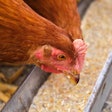
The National Academy of Sciences (NAS) is set to update the 23-year-old “Nutrient Requirements of Poultry” to reflect the latest scientific literature on the nutrition standards for many types of poultry.
The first nutrient requirements for poultry were written in 1920 and had been updated every 10-12 years. But the latest report is from 1994 and overdue for an update.
NAS said an ad hoc committee will prepare a report that reviews the scientific literature on the nutrition of poultry and makes recommendations on nutrient requirements. All life phases and types of production will be addressed.
“New recommendations will be made with consideration for the increased performance of different types of poultry, including broilers, turkeys, laying hens, and ducks with updates to additional species, as appropriate,” NAS said. “The report will include a comprehensive analysis of recent research on feeding and nutrition of poultry including new research on the amounts of energy, amino acids, lipids, minerals, vitamins, lipids, and water needed by poultry; a summary of the composition of feed ingredients, mineral supplements, and feed additives routinely fed to poultry; information about variability in feed ingredients sourced from different regions; and information about feed ingredients from the biofuels industry and other new ingredients (e.g., novel soybean products).
“The report will examine requirements for digestible phosphorus and amino acids and update concentrations of digestible phosphorus and amino acids in feed ingredients, examine new information about nutrient metabolism and utilization and provide a review of nutritional and feeding strategies to minimize nutrient excretion. A discussion of the effect of feeding on the nutritional quality of poultry meat and eggs will be included. Effects of the environment, feed management, and other production aspects on nutrient requirements, including antibiotics and their alternatives, will be addressed.
“In addition, quantitative information on requirements will be incorporated, as well as new information on bioavailability of various nutrients. This revision also will include mathematical equations that reflect the biologic basis for predicting requirements and performance based on nutrient input-production response relationships. Depending on the extent of new information available, a computer model may be developed that incorporates these mathematical equations. Future areas of needed research also will be identified.
Requests from industry
The poultry health and nutrition industry is calling on the NAS to examine current, priority nutrition issues that may impact the health of broilers, turkeys, laying hens, ducks and other poultry species over their lifecycles.
According to the Institute for Feed Education and Research (IFEEDER), some of the issues it would like to see addressed in an update include:
- The use and composition of mineral supplements
- The effect of feeding on the functional meat quality (i.e., white striping and woody breast)
- Amino acid digestibility methodology
- Changes in housing structures for layer hens, which may impact nutrient requirements
- The use of cocci vaccine versus a chemical coccidiostat program, which may impact the gut health and nutrient flow for young broilers
- The lack of administering ionophores or antibiotics to treat sick poultry
IFEEDER has also asked NAS to clarify whether global, peer-reviewed research or only domestic will be considered, and it requested that NAS include the environmental impacts of different feeding management strategies in a final report.
Advancements in poultry industry
Since the last update of the “Nutrient Requirements of Poultry” guide, the poultry industry has advanced tremendously and faces new challenges and demands that were not foreseen or accounted for in 1994. For instance, layer feed conversion rates continue to improve year on year, but the guide’s recommendations have not kept pace with that development. Furthermore, some experts feel the nutrient requirements need to be adapted as they are based on controlled studies and therefore often exclude the stresses encountered in a commercial environment.
The 13 vitamins required account for approximately 33 percent of the total number of feed ingredients in many complete poultry rations. However, vitamins represent only a minute fraction of poultry feeds, amounting to less than 0.1 percent by weight and about 1 to 2 percent of the cost of poultry rations, depending on the diet used and the level of supplementation required.
In 2013, an entire symposium was dedicated to the topic of nutrient requirement evaluation and publications for poultry, which was basically a discussion of the need for a new National Research Council publication on Nutrient Requirements of Poultry. While genetic companies have helped fill the void, there was consensus supporting an updated database of ingredient profiles and an improved and expanded section on modeling of nutrient requirements for poultry.















